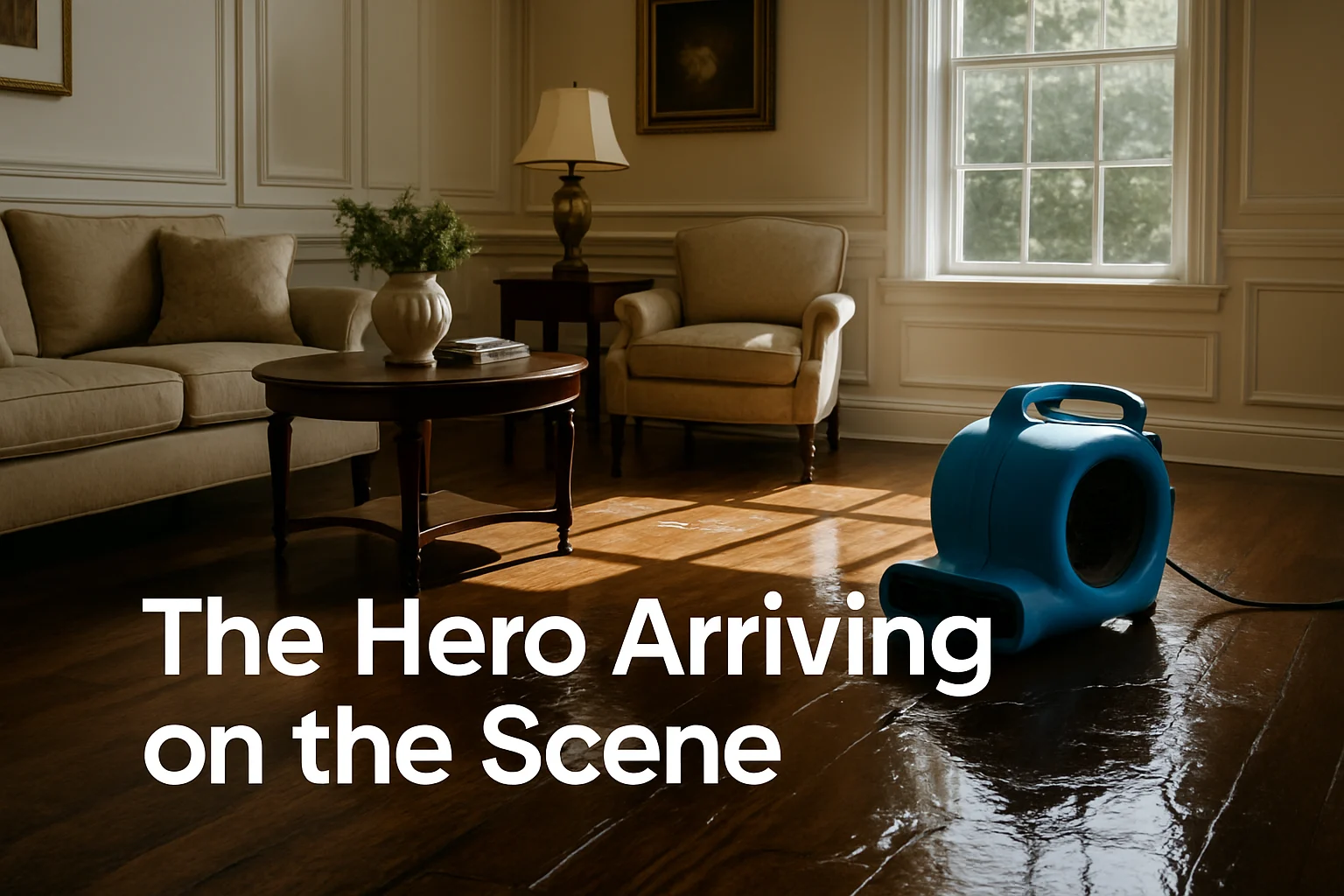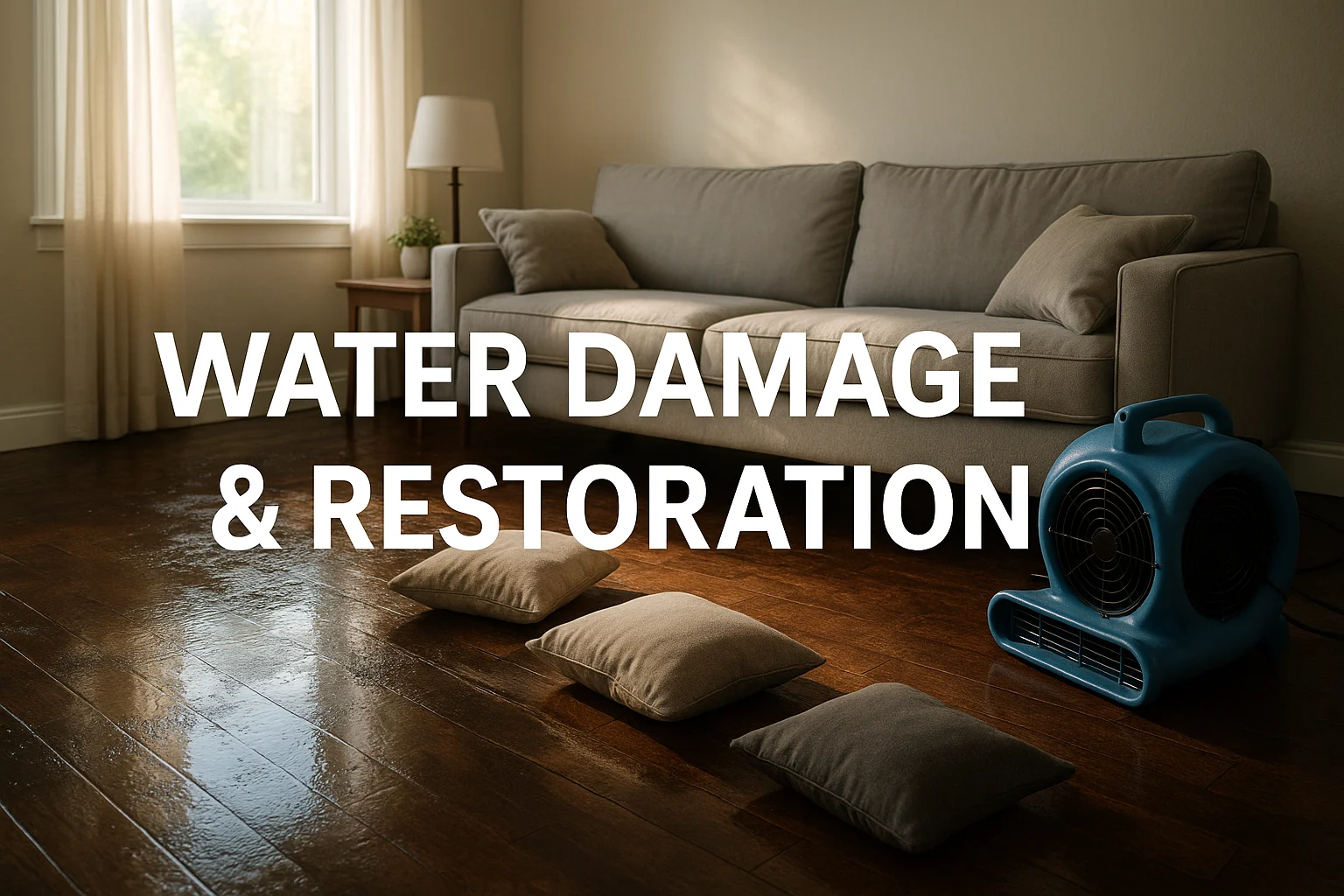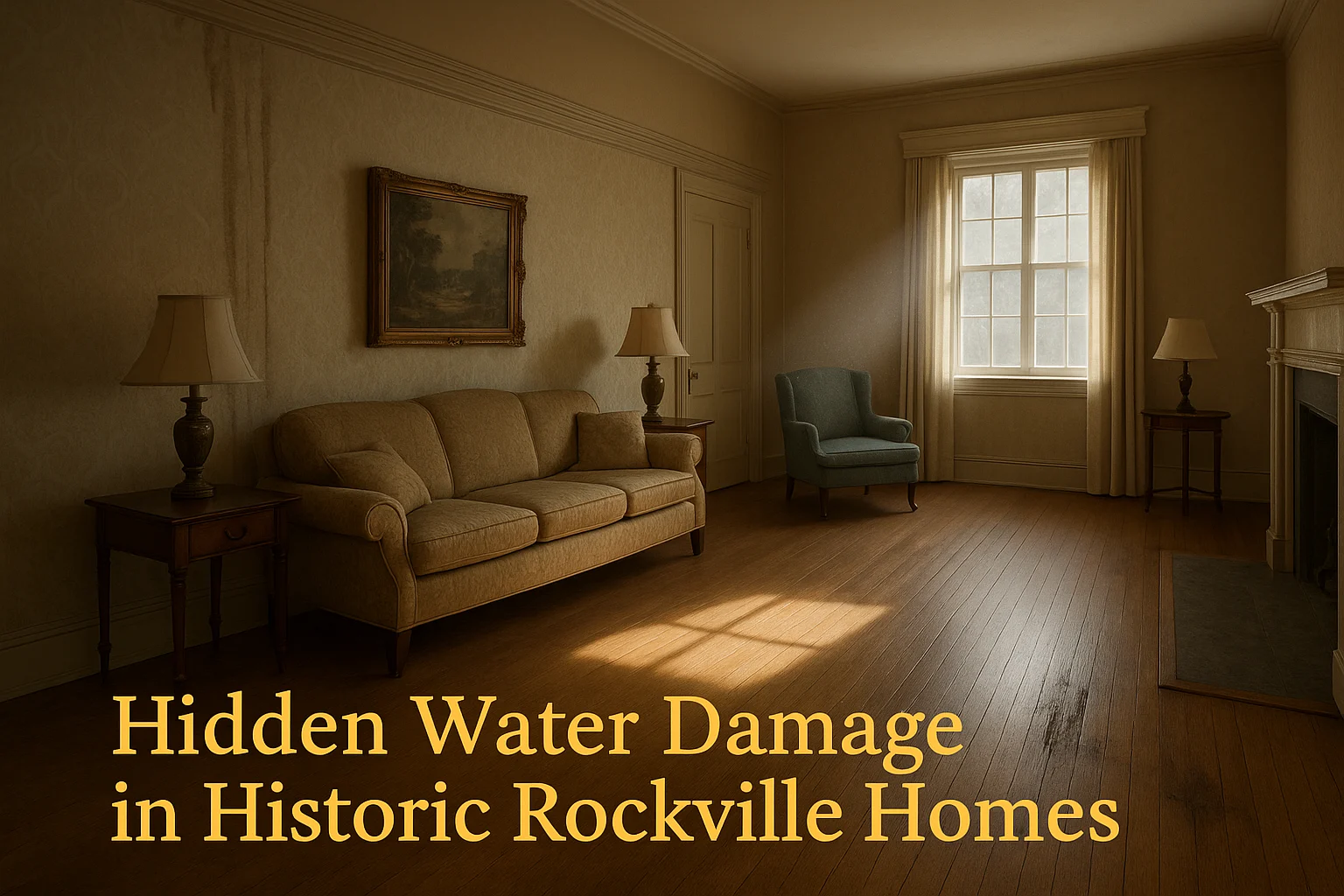The timeless elegance of hardwood floors is a coveted feature in many Potomac homes. From classic colonials to modern custom builds, the warmth and beauty of wood underfoot are unparalleled. But what happens when the unexpected occurs, and your beautiful hardwood is threatened by water damage? Whether from a sudden pipe burst, a leaky appliance, or the pervasive humidity of a Mid-Atlantic summer, the sight of cupping, discoloration, or warping can be heart-wrenching.
Before you resign yourself to the costly fate of a full replacement, take a deep breath. In many cases, your water-damaged hardwood floors can be saved. This guide will walk you through the essential steps to restore your floors, the importance of professional intervention, and how to protect your investment in the future.
What Does Water Damage Do to Hardwood Floors?
Understanding the enemy is the first step to victory. When water meets wood, several things can happen:
- Swelling and Warping: Wood is a porous material, and it will absorb any moisture it comes into contact with. This absorption causes the wood to swell, leading to a variety of distortions such as:
- Cupping: The edges of the boards are higher than the center.
- Crowning: The center of the boards is higher than the edges.
- Buckling: The floorboards lift away from the subfloor.
- Staining and Discoloration: Water can carry minerals and dirt that stain the wood. Even clean water can leave dark marks if left to sit.
- Mold and Mildew Growth: Any damp environment is a breeding ground for mold and mildew, which can grow on and under your hardwood floors, posing a health risk and causing further damage.
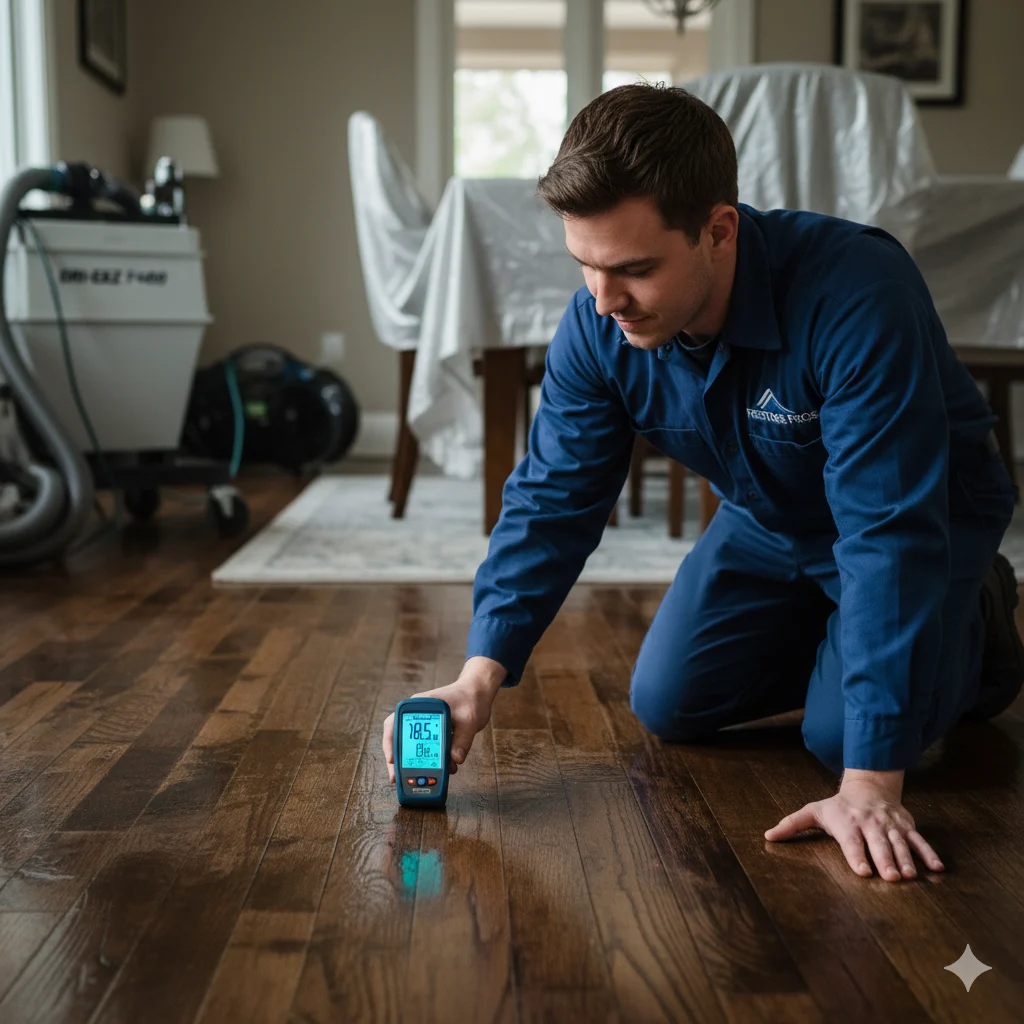
Can My Water-Damaged Hardwood Floors Be Saved?
The answer to this crucial question depends on a few key factors:
- The extent of the damage: A small spill that is quickly addressed is much easier to remedy than a floor that has been submerged for an extended period.
- The type of water: Clean water from a supply line is less of a biohazard than “gray water” from a dishwasher or “black water” from a sewage backup.
- The response time: The sooner you can begin the drying process, the better your chances of a successful restoration.
In many situations, especially with prompt action, professional restoration can return your hardwood floors to their pre-damage condition.
The Restoration Process: A Step-by-Step Overview
Restoring water-damaged hardwood floors is a meticulous process that requires specialized knowledge and equipment. Here’s what you can expect when you call in the professionals:
1. Emergency Water Extraction and Drying
The first and most critical step is to remove all standing water and thoroughly dry the affected area. This is where a professional team makes a significant difference. Companies like APS Flood Restoration utilize advanced equipment, including:
- High-powered water extractors: These machines remove a majority of the water from the surface of the floor and the surrounding areas.
- Industrial-grade dehumidifiers: These powerful units pull moisture from the air, preventing further absorption by the wood.
- High-velocity air movers: These fans create airflow across the surface of the floor, accelerating the evaporation process.
2. Assessment and Monitoring
Once the initial drying is underway, a thorough assessment is conducted. This involves using moisture meters to detect the level of moisture in the hardwood, subfloor, and surrounding walls. This data-driven approach ensures that the drying process is complete and no hidden moisture remains.
3. Sanding, Refinishing, or Repair
After the floors are completely dry, the aesthetic repairs can begin. Depending on the level of damage, this may involve:
- Sanding and Refinishing: For floors with surface-level staining or minor warping, sanding down the damaged layer and applying a new finish can restore their beauty.
- Board Replacement: In cases where individual boards are severely damaged or warped, they can be carefully removed and replaced with new, matching wood.
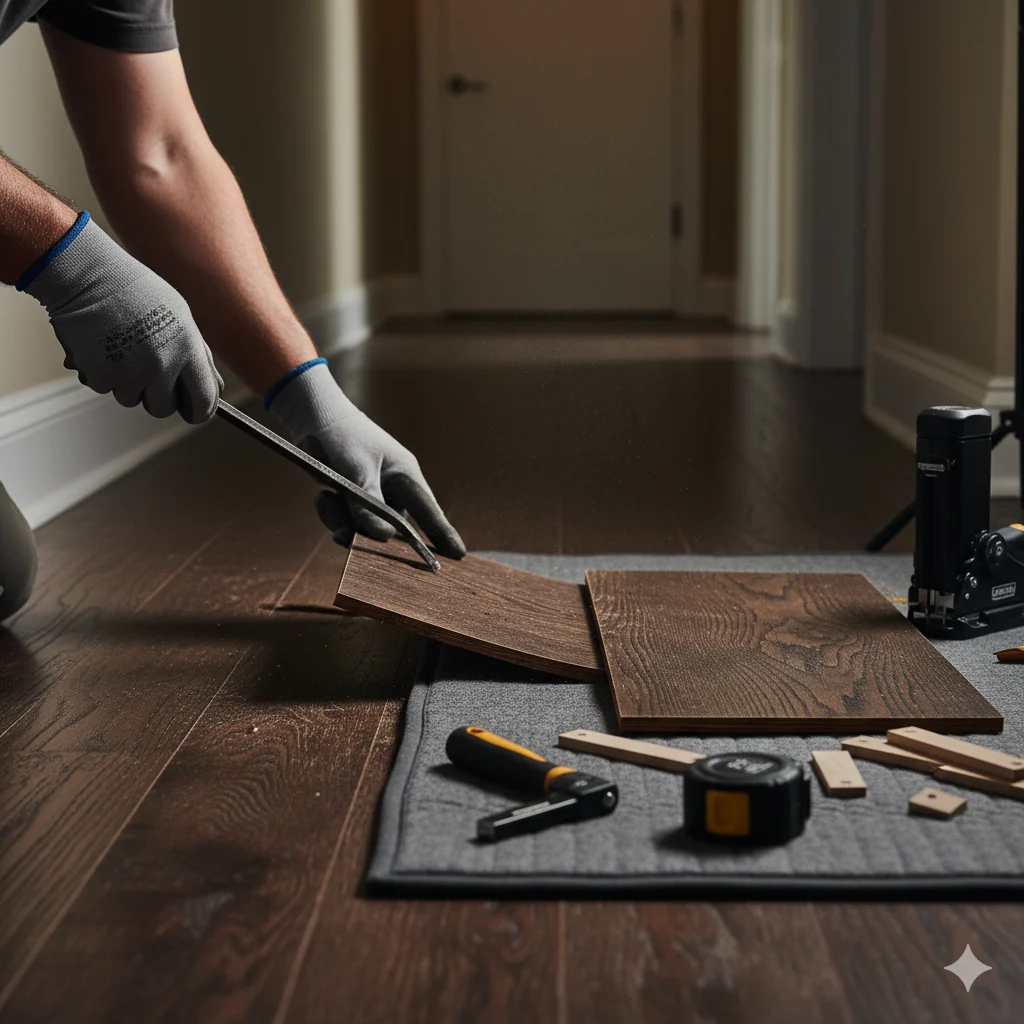
Why Professional Restoration is a Worthwhile Investment
While a DIY approach might seem tempting for minor spills, significant water damage requires professional expertise. Here’s why:
- Thorough Drying: Professionals have the tools to ensure that not just the surface, but the subfloor and surrounding structures are completely dry, preventing long-term issues like mold growth and structural damage.
- Specialized Knowledge: Experienced technicians understand the nuances of different wood species and how they react to water and drying, ensuring the right techniques are used for your specific floors.
- Insurance Navigation: A reputable restoration company can help you navigate the complexities of your homeowner’s insurance claim, providing the necessary documentation and working with your adjuster.
A Note on Potomac’s Climate and Your Hardwood Floors
Living in Potomac means experiencing a full range of seasons, including hot, humid summers. This high humidity can have a subtle but persistent effect on your hardwood floors, causing them to expand and contract. To minimize this, it’s wise to:
- Maintain a consistent indoor humidity level (ideally between 35% and 55%) using a dehumidifier in the summer and a humidifier in the winter.
- Ensure proper ventilation in your home.
Being mindful of the local climate can go a long way in preserving the integrity of your hardwood floors.
Do I Need a Permit for Water Damage Restoration in Potomac?
For most water damage restoration that involves drying, cleaning, and minor repairs, a permit is typically not required in Montgomery County. However, if the damage is extensive and requires structural repairs, such as replacing a subfloor or removing a wall, a permit will likely be necessary. A professional restoration company will be familiar with the local regulations and can advise you on whether a permit is needed for your specific situation.

Act Fast and Call the Pros
The sight of water-damaged hardwood floors can be alarming, but it doesn’t have to mean a complete loss. By acting quickly and enlisting the help of a professional restoration team, you can often save your beautiful floors and protect the value of your Potomac home.
Don’t wait for the damage to worsen. If you’re facing a water emergency, a prompt call to a specialist is the most important step you can take.
.button-container { text-align: center; margin: 30px 0; /* Adds space above and below */ } .modern-button { /* Core Appearance */ display: inline-block; background: linear-gradient(45deg, #0052D4, #4364F7, #6FB1FC); /* Modern gradient background */ color: #ffffff; text-decoration: none; font-family: -apple-system, BlinkMacSystemFont, “Segoe UI”, Roboto, Helvetica, Arial, sans-serif; /* Best practice font stack */ font-size: 18px; font-weight: 600; /* Spacing & Shape */ padding: 16px 32px; border-radius: 50px; /* Pill shape for a very modern look */ border: none; cursor: pointer; /* Effects & Animation Setup */ background-size: 200% 100%; /* For the gradient animation */ box-shadow: 0 5px 20px rgba(67, 100, 247, 0.3); transition: transform 0.3s ease, box-shadow 0.3s ease, background-position 0.5s ease; } /* — The Hover Animation — */ .modern-button:hover { /* Moves the gradient for a shimmering effect */ background-position: right center; /* Lifts the button up and makes the shadow more prominent */ transform: translateY(-5px); box-shadow: 0 8px 30px rgba(67, 100, 247, 0.5); } /* Provides feedback when the button is actively being clicked */ .modern-button:active { transform: translateY(0); /* Pushes button back down to its original spot */ box-shadow: 0 5px 15px rgba(67, 100, 247, 0.4); }